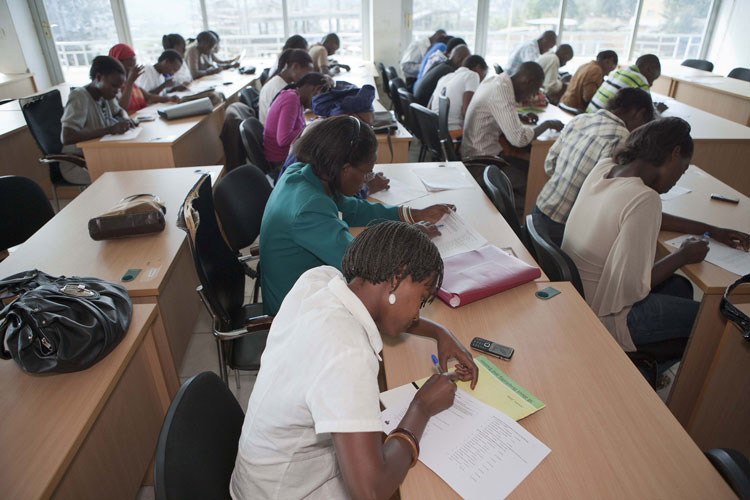
To follow up on the publication of the new Strategic Plan of Survivors Fund (SURF) for 2024 to 2028, we will be publishing several posts to provide more context of our work – and implications for the the survivors of the genocide against the Tutsi in Rwanda which we support.
Education
The education system in Rwanda has witnessed considerable transformation, especially following the devastating genocide in 1994. Efforts from the Rwandan government, coupled with international assistance, have sought to revitalize and restructure the education sector, aiming to enhance access, equality, and quality of education for all citizens. The Rwandan education system adheres to a structure that comprises pre-primary, primary, secondary, and tertiary education levels, along with vocational and technical training opportunities.
Pre-primary education in Rwanda caters to persons from four to six years, providing foundational learning experiences. Just 18 per cent of persons in Rwanda are enrolled in pre-primary education. There are too few pre-primary facilities, insufficient government budgeting for pre-primary education, and inadequately trained pre-primary educators.
Primary Education spans six years (P1 to P6) and typically accommodates persons from ages 7 to 12. The Rwandan government has placed a particular emphasis on ensuring universal access to primary education, with various strategies, including the introduction of the 12-Year Basic Education (12YBE) policy, to bolster enrolment and retention. In sub-Saharan Africa, Rwanda is one of the top-performing countries in education. 98 per cent of persons are enrolled in primary school, but only 71 per cent of persons complete their primary education. Classrooms are often too crowded, with an average of 62 students for every qualified teacher.
Secondary Education also falls under the ambit of the 12YBE policy, extending for six years and is divided into two cycles: lower secondary (Senior 1 to Senior 3) and upper secondary (Senior 4 to Senior 6). Various streams, such as sciences, arts, and vocational training, are offered, facilitating diverse pathways for learners based on their interests and capabilities.
Higher Education in Rwanda has seen significant expansion and diversification over the past decades. Institutions, both public and private, offer undergraduate, postgraduate, and doctoral programs across a myriad of disciplines. Furthermore, the establishment of institutions like the University of Rwanda, along with various private universities and colleges, has broadened opportunities for tertiary education within the country.
Vocational and Technical Education and Training (TVET) is prioritized within Rwanda as a means to equip individuals with practical skills and knowledge pertinent to the labor market. Various centers and institutions offer programs across levels, ranging from short courses to diploma and degree qualifications, in fields like agriculture, tourism, construction, and information technology.
Although there are relatively equal numbers of boys and girls in classrooms, girls are more likely to drop out of school. Boys also outperform girls in 26 of Rwanda’s 30 districts. Girls are also significantly under-enrolled in technical, vocational and tertiary education.
Despite the strides made in enhancing education in Rwanda, challenges like resource constraints, disparities in access, and quality of education between urban and rural areas, and ensuring that education effectively translates into employability and socio-economic mobility persist. Nevertheless, with various policies, such as the Education Sector Strategic Plan, Rwanda continues to navigate toward ameliorating these challenges and fortifying its education system.
Implication for survivors and related vulnerable groups: Survivors have benefited from access to schooling since the establishment of FARG in 1998. However, FARG has now been dissolved and second-generation survivors (in particular persons born to women survivors raped during the genocide) are not supported, despite requiring additional support to secure the same educational opportunities afforded to survivors. There is a particular need for more vocational training to enable school graduates to transition into employment.
